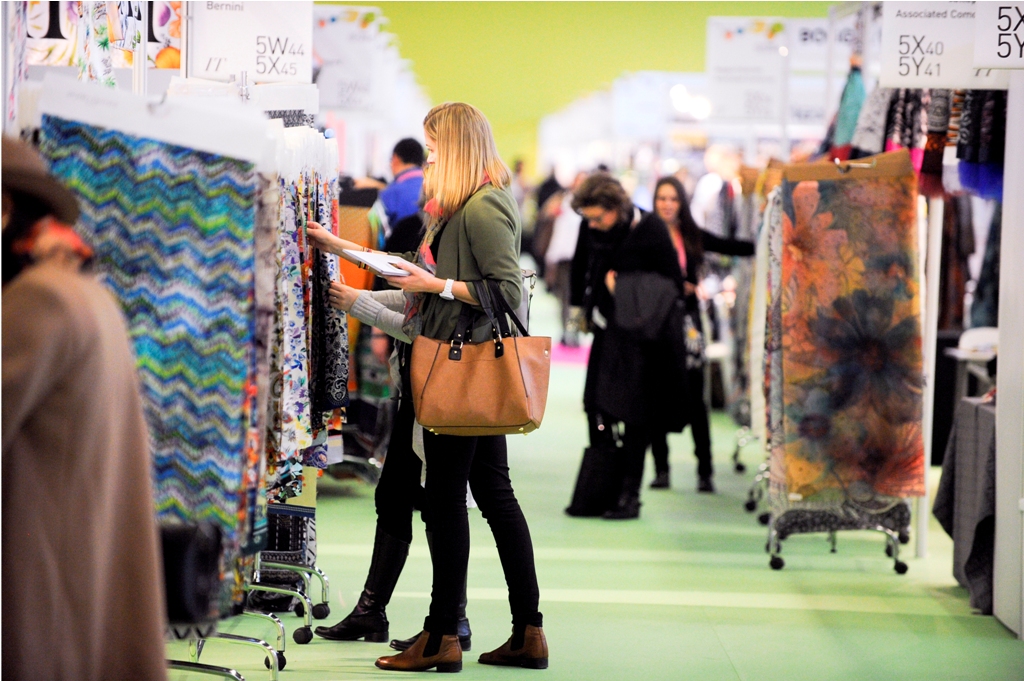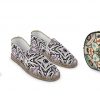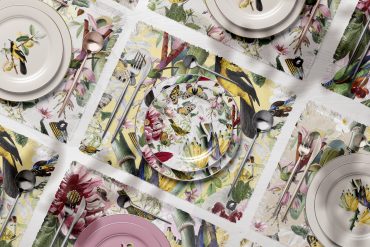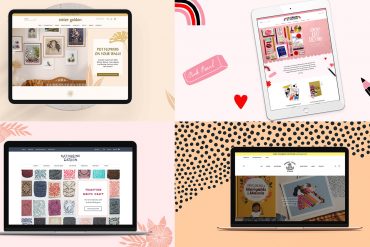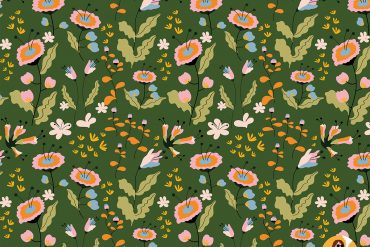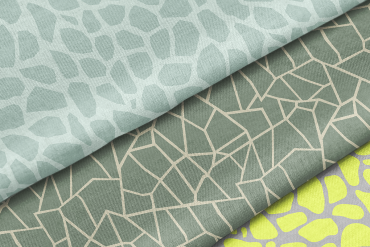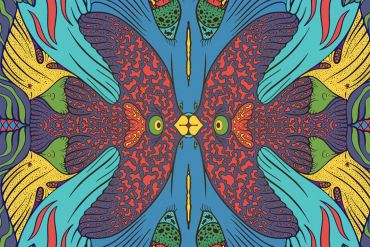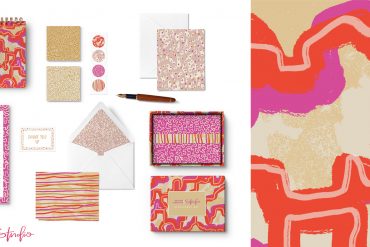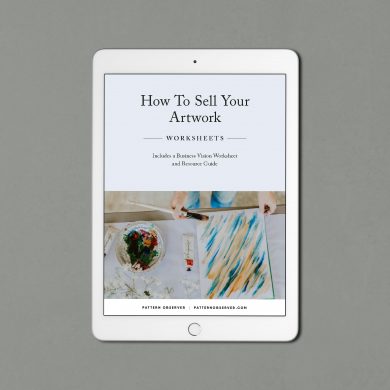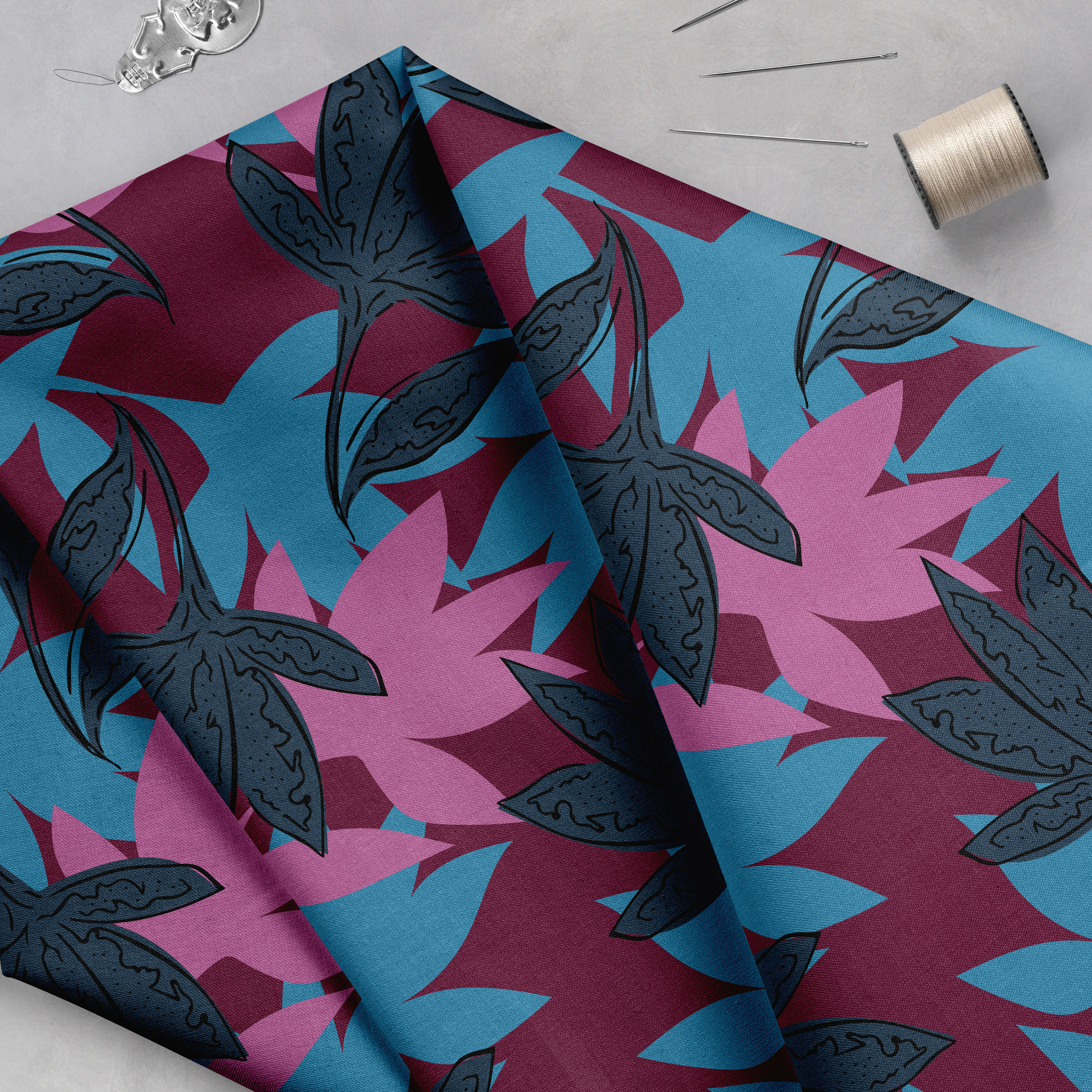We are thrilled to welcome Lidija Paradinović Nagulov of Celandine Design for this field report of Premiere Vision.
I spent February 10th to 12th in Paris, walking the Premiere Vision print show. It was my first print show, and I wanted to share some impressions from the event, since I know lots of designers consider walking or exhibiting at Premiere Vision at some point.
Getting To Premiere Vision
Let’s start by saying that Paris is gorgeous, even in February. The weather was cold but dry, and we had a great time running around town and being touristy in between the serious pattern business. It’s an expensive city but if you take some smart shortcuts your stay can be pretty affordable. I’ll attach my full expenses list at the end of the text, it came out cheaper than I expected.
Premiere Vision is held in the gigantic Parc De Expositions Villepinte, which can be reached from the centre of Paris by a 30 min metro ride. We chose our accommodation near Villepinte to cut down our commute times, but unless you plan skipping the tourist part of the trip entirely, you’ll still be going back and forth a lot so it hardly matters.
We arrived a day early and used the first day to get our bearings, figure out the metro system, and eat madeleines in front of the Notre Dame. On the morning of Feb 10th the expo halls were like ant hills, pulsing with long queues of people waiting for their entrance passes, buying overpriced coffee or lining up to get their suitcases stored. The expo organization is impeccable, with all the queues moving at lightning speed and all information readily available at every step, including a phone app that helps you get organized and gets you an invite to a few special presentation events.

Exploring Premiere Vision
The designs section of Premiere Vision is nestled at the back of the Fabrics hall, which is the largest. Other halls house the Leather, Yarn, Accessories, and Manufacturing shows. The 30 eur (around 40 $) entry ticket gives you access to all of these, and although our focus was on the patterns, it was fascinating to see the latest in buttons, ribbons, knits and dyed leather. Leather trends in particular are really exciting this year, with lots of snake skins dyed in wild jewel colors, crocodiles with sparkly and mother-of-pearl finishes, and beautiful rich shades of blue, violet and lavender stealing the show.
The Fabrics hall is also home to the trend forecasting company booths, including WGSN, Carlin, Promostyl, and Nelly Rodi, where you can browse through their most current trend books and hunt for inspiration. Our absolute favorite was the Carlin booth, whose books were full of fabric swatches, color chips, and extremely focused mood boards that really do the work of trend interpretation for you, while some of the others were more abstract. Next to the trend forecasting booths there are some book sellers with gorgeous fashion and pattern books and magazines. There are also booths giving demonstrations of advanced design software, such as the impressive AVA CAD that lets you create organic repeats, knit designs, and amazing quality color separations in a matter of minutes. The convenience comes with a price to match – an annual license for the basic module is around 3000$, and outright purchase is about three times that much. Still, if you have a lot of client work putting designs into repeat or indexing colors for printing, it could easily increase your productivity tenfold.
The Design section of Premiere Vision seems dwarfed by the giant expanse of the Fabrics hall, but over 200 designers and studios were exhibiting this year. Some artists have their own booths, but the majority are either studios with anywhere from three to fifteen in-house designers, or freelance studios that work with independent artists and show varied collections by thirty to fifty or more different designers. The reason individual artists are a minority is the vast amount of work you need to present at the show – the smallest booths were showing around 400 original, previously unseen designs. Premiere Vision is held twice a year – once in February and once in September, so anyone wishing to exhibit regularly would need to be producing over 800 top-notch patterns per year.

Sales At Premiere Vision
The cost of exhibiting at Premiere Vision isn’t as exorbitant as some of the big US shows – the exhibitors we talked to told us that booth prices start at around 2500$, and it’s possible for a group of artists to share a booth, as long as they present under one name.
Premiere Vision is a selling show, and most prints go for anything from 300$ to 1200$. It’s geared primarily towards fashion, with a much smaller representation of kids wear, home décor, and other markets. Some of the sellers also visit other shows, like SURTEX, HEIMTEXTIL, or the Printsource shows in Istanbul and Milan, but the general consensus is that out of the European shows, the Paris show is the largest and best visited. This is where you want to be seen.
Types of Patterns At Premiere Vision
Walking into the Designs section, our first impression was one of flowers, flowers everywhere. Traditional florals with a subtle modern color twist, hand-drawn florals in muted bright palettes, abstract and semi-abstract florals, and painted tropical florals seemed to steal the show. Organic abstracts and geometrics weren’t far behind.
A great majority of the prints had a handmade and organic quality, with elaborately worked out repeats and sophisticated colorways. Heavily layered and filtered digital prints were conspicuously absent. Buyers were saying they love to see the artist’s hand in the work.
British studios in particular seemed to be making a killing in sales, and hitting an amazing balance between traditional and trending looks. Studios like Jack Jones , Helena Gavshon, Keeler Gordon, and Westcott were definitely the cool kids on the playground.
My absolute favorites were the Pattern Textiles studio from the UK, whose booth was wrapped in the most stunning oversized floral pattern created in collaboration by all ten of the studio designers, and the Los Angeles designer Liz Casella, whose palettes and motifs hit that perfect balance between the future and the past that seems to be such a hot look this year.

The Premiere Vision Community
The flurry of activity at Premiere Vision was mesmerizing to watch. Buyers were zooming around looking for the hottest picks of the show, and the sellers were unfurling roll after roll of printed silks. There were three major ways of presenting patterns – those printed on paper and displayed in stacks on booth tables were in the minority, and drew less attention than those printed on fabrics. The fabric swatches were approx 40 x 64 cm, printed on soft, delicate silks to appeal to the touch – and to pack light – and some were even cut into crude garment forms, like faux dresses or tops, to help clients visualize the final product. There was a lot of fabric touching going on, and the tactile contact with the printed silks seemed to really help the buyers connect with the prints they loved.
Some booths were surrounded by a rail on which all the pattern swatches were displayed on hangers, forming a soft, thick wall of colorful silk. This allowed potential clients to browse freely as they would do in a store, and the seller would approach them once they had made their first selections. The studios attracting the most attention, though, were those that had booths surrounded by tables with chairs for the buyers to sit in, and prints of similar types twirled up together in rolls of fabric. The clients would say what sort of thing they were after, and the booth staff would unfurl the appropriate bunch of patterns and show them quickly one by one, like colorful fluttery flash cards, while chatting with the buyers about the work. Everyone seemed to know exactly what they were looking for, and the purchase decisions were made swiftly. The first day of the show moves like a race track, and nobody has time to waste.
The first day is when the majority of the actual selling takes place, so we walked and watched and didn’t speak to anyone, not wanting to disturb the intricate courtship dances that were happening at each booth. Contrary to our expectations, unusual, original and very trend-forward designs were getting passed over in favor of safer and more traditional pieces with a subtle modern interpretation. Fully traditional designs were also doing reasonably well, and the few booths selling scraps of vintage fabric and clothing were doing great business. It’s worth remembering that designers get more excited about bleeding-edge trends than buyers and their clients do.
On the third day the storm had largely died down, and lots of exhibitors were more than happy to chat with us. They all seemed to be saying the exact same thing – ‘It was a good show, but not as busy as last year.’ Still, most seemed happy with their sales.

We met three ladies from Spain who were buying for a large retailer. They have been coming to the show twice a year for the last 27 years. They said the show is definitely more modest than it used to be, but still provides a great place to catch up on trends and strengthen relationships with their favorite designers. They mostly buy from the same studios every time, but they always scan the newcomers for potential gems. We had fun trying to imagine the glamour of the old booth decorations they were describing – huge screens, LED displays, textile sculptures. Only one or two booths at this year’s show had any decoration more elaborate than simply panel walls covered in patterned fabric. Another sign of the lingering economic crisis – exhibitors are passing over the ‘WOW’ effect and sticking to the most cost-effective options.
I couldn’t resist talking to the girls from Pattern Textiles and complimenting their stunning floral collaboration piece. They were sweet and earnest in sharing their views on the show. I ask if it’s painful to let go of their favorite designs and sell copyright – they ponder for a moment, then one of them says ‘Depends who buys it!’ She continues: ‘Sometimes even the buyers seem kind of sad to be taking it, because they can see already that they won’t be able to do it justice – they’ll cut down the number of colors to reduce costs or lose some of the fine detail during the production process.’ The floral collaboration was sold to a high-profile menswear company – they’re happy with its new home. I’ll be keeping an eye out for it on the runways.
Out of respect for the exhibiting artists, we didn’t bring any promotional materials or approach any buyers, but representatives of the freelancing studios we spoke to were eager to connect and often asked for our cards and contact info. I had my little box of MOO Printfinity cards, each with a different pattern on the back, and they caused squeals of delight each time – most people ended up picking at least two different ones. These are definitely an affordable and easy way to stand out – almost like a tiny portfolio hiding in your pocket. It was also fun to see which card designs were drawing the most attention.
Participating In Premiere Vision
The whole experience definitely left us excited and wondering if we can pull off renting our own booth at one of the future shows. Taking part as an individual artist seems like a tall order – although the booth cost of 2500$ is far more affordable than showing at Surtex or Printsource NY, producing 400 or more high-quality original designs each season is tough, and manning the booth without assistance is exhausting, since you can’t afford to leave it unattended at any point during the day. A few artists teaming up together could be the perfect solution to tackle both the financial and the logistical burdens of the show.
For those who don’t feel ready, submitting a bunch of prints through a freelance agent or studio is a great risk-free way to get your toes wet. Patternbank was showing beautiful work from its Premium collection, and their representatives encouraged us to submit for the next show. Of course these studios show work from many different artists, so each artist’s individual exposure is lower, but the risk and cost are far lower too – and making a lot of sales through an agent could give you the confidence boost you need to try exhibiting yourself next time. It’s worth remembering that all exhibitors are listed on the Premiere Vision website, along with descriptions and contact information, including email.
If even that feels too ambitious, you can always come and walk the show, get inspired, catch up on the trends, and spend a few days in one of the most beautiful cities on earth. I can think of worse fates!
TRIP COST:
- Flight – 250$ (helps if you’re in Europe!)
- Accommodation – 150$ (rented apartment from AirBnB, shared with another designer)
- Exhibition Pass – 40$ (valid for all three days, for all the shows, booked online. It’s slightly more expensive if you buy it on the spot)
- Local transport – 75$ (five-day ‘Paris Visite’ pass that lets you use all public transport, as much as you wish. It gets you everywhere.)
- Food – 150$ (eating at the show itself is lethally expensive – think $4,50 for a bottle of water)
Total – less than 700$
You can follow Lidija on Facebook, Twitter, or visit her website or tumblr.

